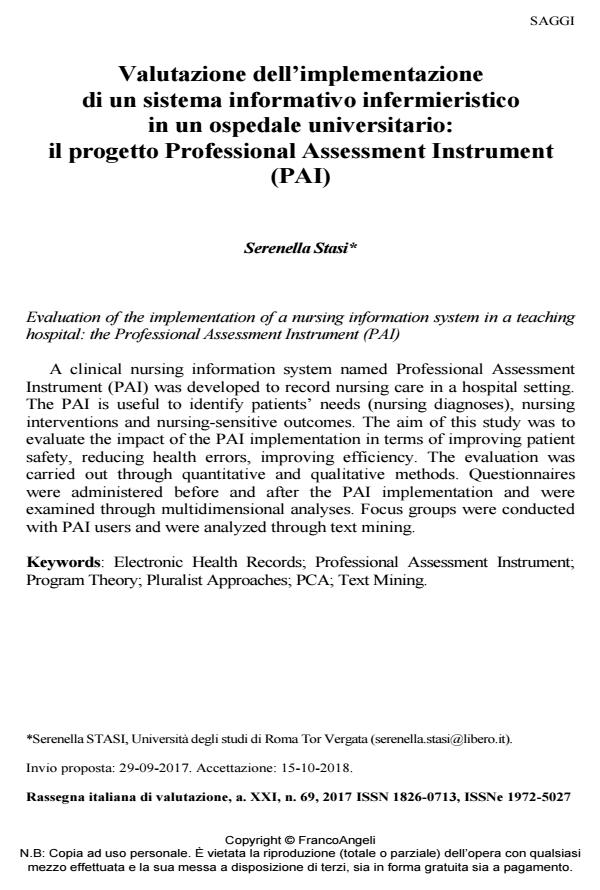Evaluation of the implementation of a nursing information system in a teaching hospital: the Professional Assessment Instrument (PAI)
Journal title RIV Rassegna Italiana di Valutazione
Author/s Serenella Stasi
Publishing Year 2019 Issue 2017/69
Language Italian Pages 21 P. 57-77 File size 583 KB
DOI 10.3280/RIV2017-069004
DOI is like a bar code for intellectual property: to have more infomation
click here
Below, you can see the article first page
If you want to buy this article in PDF format, you can do it, following the instructions to buy download credits

FrancoAngeli is member of Publishers International Linking Association, Inc (PILA), a not-for-profit association which run the CrossRef service enabling links to and from online scholarly content.
A clinical nursing information system named Professional Assessment Instrument (PAI) was developed to record nursing care in a hospital setting. The PAI is useful to identify patients’ needs (nursing diagnoses), nursing interventions and nursing-sensitive outcomes. The aim of this study was to evaluate the impact of the PAI implementation in terms of improving patient safety, reducing health errors, improving efficiency. The evaluation was carried out through quantitative and qualitative methods. Questionnaires were administered before and after the PAI implementation and were examined through multidimensional analyses. Focus groups were conducted with PAI users and were analyzed through text mining.
Keywords: Electronic Health Records; Professional Assessment Instrument; Program Theory; Pluralist Approaches; PCA; Text Mining.
Serenella Stasi, Valutazione dell’implementazione di un sistema informativo infermieristico in un ospedale universitario: il progetto Professional Assessment Instrument (PAI) in "RIV Rassegna Italiana di Valutazione" 69/2017, pp 57-77, DOI: 10.3280/RIV2017-069004